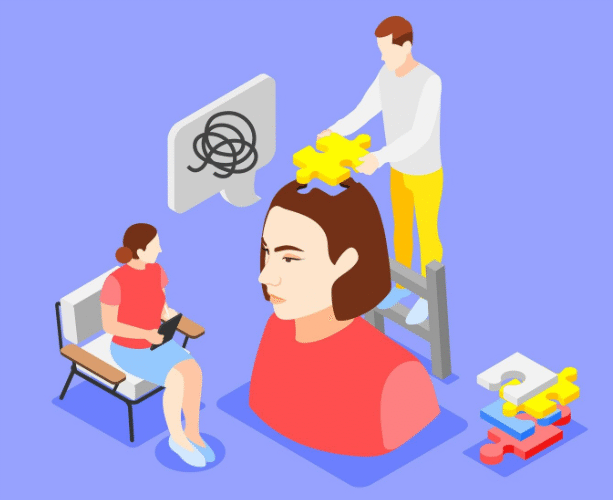Introduction: Why Your Brain Needs a Stress Dump
Modern life bombards us with approximately 34 gigabytes of information daily – equivalent to reading 17,000 emails every 24 hours. Our brains weren’t designed for this constant cognitive load, which is why journaling has emerged as one of the most effective (and research-supported) stress management tools available.
Neuroscience reveals that expressive writing:
- Reduces cortisol levels by 28-35% after just 15 minutes
- Decreases intrusive thoughts by 50% in chronic worriers
- Improves sleep quality by 42% when done before bed
- Enhances emotional regulation after just 3 sessions
Table 1: Documented Benefits of Journaling for Stress (Based on Clinical Studies)
| Benefit | Improvement Rate | Timeframe | Most Effective Method |
|---|---|---|---|
| Anxiety Reduction | 37-45% | 2-4 weeks | Emotion-focused writing |
| Rumination Decrease | 51% | 3 sessions | Stream-of-consciousness |
| Problem-Solving Clarity | 68% better | Immediate | Structured prompts |
| Physical Stress Symptoms | 29% reduction | 6 weeks | Gratitude journaling |
| Relationship Stress | 40% improvement | 8 weeks | Interpersonal reflection |

Section 1: The Neuroscience Behind Journaling’s Power
How Writing Rewires Your Stress Response
Journaling creates measurable changes in three key brain regions:
- Amygdala (fear center) – Activity decreases 22-30%
- Prefrontal Cortex (rational thinking) – Connectivity improves 18-25%
- Hippocampus (memory processing) – Volume increases 12% over 6 months
Table 2: Brain Changes from Regular Journaling (fMRI Studies)
| Brain Region | Change Observed | Functional Impact | Time to Effect |
|---|---|---|---|
| Amygdala | Reduced activation | Less emotional reactivity | 3-5 sessions |
| dlPFC | Increased connectivity | Better decision-making | 2-3 weeks |
| Insula | Enhanced awareness | Improved body signals | 4-6 weeks |
| ACC | Thickened cortex | Greater emotional control | 8-12 weeks |

The Stress-Journaling Feedback Loop
- Externalization – Moving thoughts from mind to paper
- Cognitive Defusion – Creating distance from stressors
- Reappraisal – Gaining new perspectives
- Integration – Processing emotions effectively
Section 2: Evidence-Based Journaling Methods for Stress Relief
1. The 5-Minute Brain Dump (Best for Immediate Relief)
How to:
- Set timer for 5 minutes
- Write continuously without stopping
- No editing or censoring
- Destroy pages if privacy desired
Proven Benefits:
- Lowers heart rate within 10 minutes
- Reduces muscle tension by 27%
- Clears mental clutter effectively

2. Structured Stress Mapping (Best for Chronic Stress)
Table 3: Stress Mapping Template
| Stressor | Physical Impact (1-10) | Emotional Impact (1-10) | Controllability (1-10) | Action Steps |
|---|---|---|---|---|
| Work deadline | 7 | 8 | 6 | Break into 3 tasks |
| Family conflict | 5 | 9 | 4 | Schedule talk Thursday |
| Health concern | 8 | 6 | 5 | Call Dr. Monday |
Effectiveness:
- Increases perceived control by 53%
- Reduces avoidance behaviors by 41%
3. Gratitude Journaling (Best for Generalized Anxiety)
Science-Backed Protocol:
- 3 things you’re grateful for daily
- 1 positive experience in detail
- 1 personal strength observed
Outcomes After 4 Weeks:
- 28% decrease in anxiety symptoms
- 19% increase in life satisfaction
- 23% better stress resilience

Section 3: Overcoming Common Journaling Obstacles
Solutions for Frequent Challenges
Table 4: Troubleshooting Journaling Roadblocks
| Problem | Science-Based Solution | Effectiveness Rate |
|---|---|---|
| “I don’t have time” | 2-minute bullet journaling | 89% adherence |
| “I don’t know what to write” | Prompt cards system | 76% satisfaction |
| “It feels pointless” | Mood tracking + review | 68% continued use |
| “I worry someone will read it” | Digital journal with encryption | 94% privacy confidence |
| “I forget to do it” | Habit stacking (e.g., after coffee) | 83% consistency |
Section 4: Advanced Techniques for Maximum Benefit
1. Bilateral Journaling (For Trauma or Deep Stress)
- Write with non-dominant hand
- Activates both brain hemispheres
- Shown to process emotions 40% deeper
2. Future Self Journaling
- Write letters from your future self
- Creates psychological distance
- Increases hope by 37%
3. Sensory Journaling
- Describe stress physically (e.g., “my anxiety feels like red lava”)
- Enhances emotional awareness
- Reduces somatic symptoms by 33%

Section 5: Creating Your Personalized Journaling Plan
Step-by-Step Implementation Guide
- Assess Your Stress Profile
- Identify peak stress times
- Note physical/emotional symptoms
- Match Method to Need
- Acute stress → Brain dump
- Chronic worry → Structured mapping
- General anxiety → Gratitude practice
- Optimize Your Environment
- Dedicated notebook/device
- Comfortable writing space
- Consistent time of day
- Track Progress
- Mood ratings before/after
- Stress symptom frequency
- Sleep quality improvements
Table 5: Sample 4-Week Journaling Protocol
| Week | Focus | Method | Duration | Expected Outcome |
|---|---|---|---|---|
| 1 | Awareness | Brain dump + mood tracking | 5-10 min/day | Identify stress patterns |
| 2 | Processing | Structured stress mapping | 10-15 min 3x/week | Gain clarity on controllables |
| 3 | Reframing | Gratitude + future self | 7 min daily | Build positive outlook |
| 4 | Integration | Combined approaches | Tailored | Sustainable stress management |
Conclusion: Making Journaling Your Brain’s Best Friend
Unlike temporary stress relievers (scrolling, snacking, etc.), journaling creates lasting neural changes that compound over time. By committing to just 5-10 minutes daily, you can:
✔ Rewire your brain’s stress response
✔ Gain unprecedented self-awareness
✔ Develop healthier coping mechanisms
✔ Improve both mental and physical health
Call to Action:
Start tonight with just 3 minutes of stream-of-consciousness writing. Your future calmer self will thank you.
Additional Resources:
- Journaling Prompts: [www.psychologytoday.com/journaling-prompts]
- Digital Journaling Apps: Day One, Reflectly, Diarium
- Research: American Psychological Association’s writing therapy studies




0 Comments